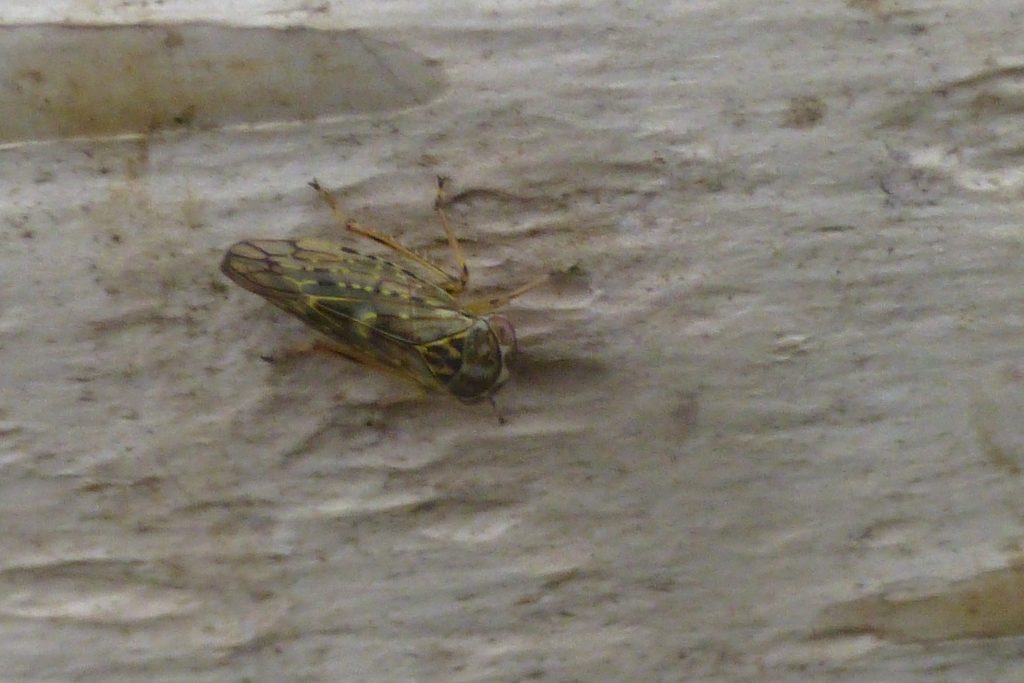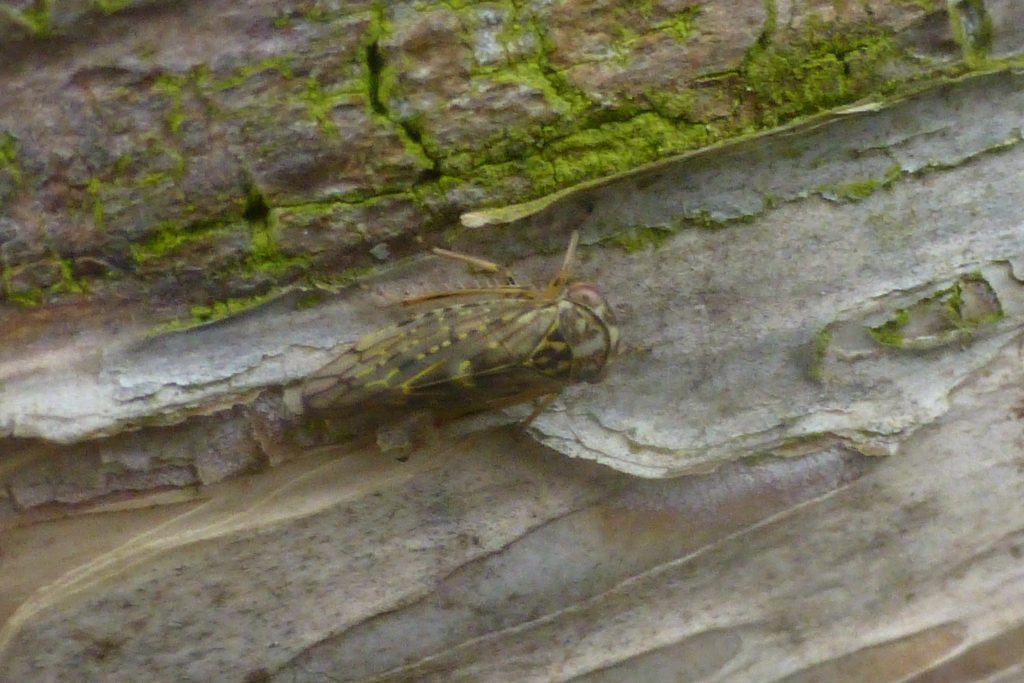Yesterday (18 January 2017), just at the end of my daily lunchtime wildlife recording walk round the Garden, I checked the bark of a particular birch tree (Betula pubescens var. glabrata) just north of the Pond, as I often do. It being mid-January, and chillier than the previous couple of days (when lots of Honey Bees had been active on gorse flowers), I was not expecting to find much except perhaps the odd small bark-fly (Psocoptera), which I did.
Imagine my surprise therefore when I noticed a rather larger insect crawling around the trunk. Not having seen anything like it before, I took a set of photographs as it moved around the trunk and then headed gradually upwards towards the canopy.
Looking at my photographs afterwards, I could see that they very closely matched a particular leafhopper species. The problem was, that particular leafhopper species should not have been on birch, but on willow; and it should not have been anywhere near Edinburgh. However, nothing else matched the photographs, so I sent a selection of the better ones off to the Auchenorryncha Recording Scheme for confirmation, or otherwise, of my tentative identification. (The Auchenorrhyncha is the name of the insect group to which leafhoppers, froghoppers, and cicadas all belong; it is one of the major groups within the Hemiptera or true bugs).
Back came two emails today, one from Alan Stewart and the other from Tristan Bantock, two experts on leafhoppers. Both confirmed my suspicions that I had photographed Idiocerus herrichi, and that this was the first Scottish record of this leafhopper species. Alan Stewart said he knew of no records further north than The Wash in eastern England. The host is normally Salix alba (white willow); the nearest willow to the Betula pubescens var. glabrata on which I found the insect is the golden weeping willow, Salix × sepulcralis ‘Chrysocoma’, beside the Pond, which has a form of Salix alba as one of its parents. Mr Stewart said in his email that it might have been blown off the willow. It looked ‘at home’ on the birch trunk though and was well camouflaged against the coating of alga and lichen (see the bottom photo in particular). Diagnostic features of the species are the three black triangles on the scutellum (the area just below the head), with a black horse-shoe shaped mark below them. There are some other British species of Idiocerus, almost all of them found on willows and/or poplars – not birch.
This is not the first new leafhopper species for Scotland that has been discovered in the Garden; in September 2015 I found Eupterycyba jucunda on its host, alder, in a different part of the Garden. Interestingly, if one compares the NBN (National Biodiversity Network) distribution map of that species with the one for Idiocerus herrichi, they are very similar – apart from the Edinburgh records, both species extend to just northwest of The Wash. Why should two different leafhopper species make a similar jump of about 250-300 miles north to Edinburgh in the space of less than 18 months?
So, not just a new Garden record (and the first such of 2017), but a new record for v.c. 83 Midlothian and indeed the whole of Scotland. A very exciting start to wildlife recording at RBGE in 2017! My thanks to Tristan Bantock and Alan Stewart for confirming the identification so swiftly.


